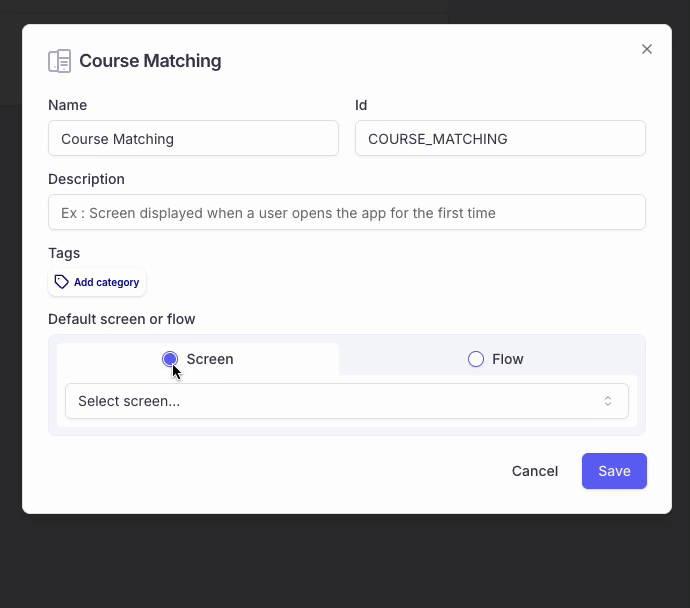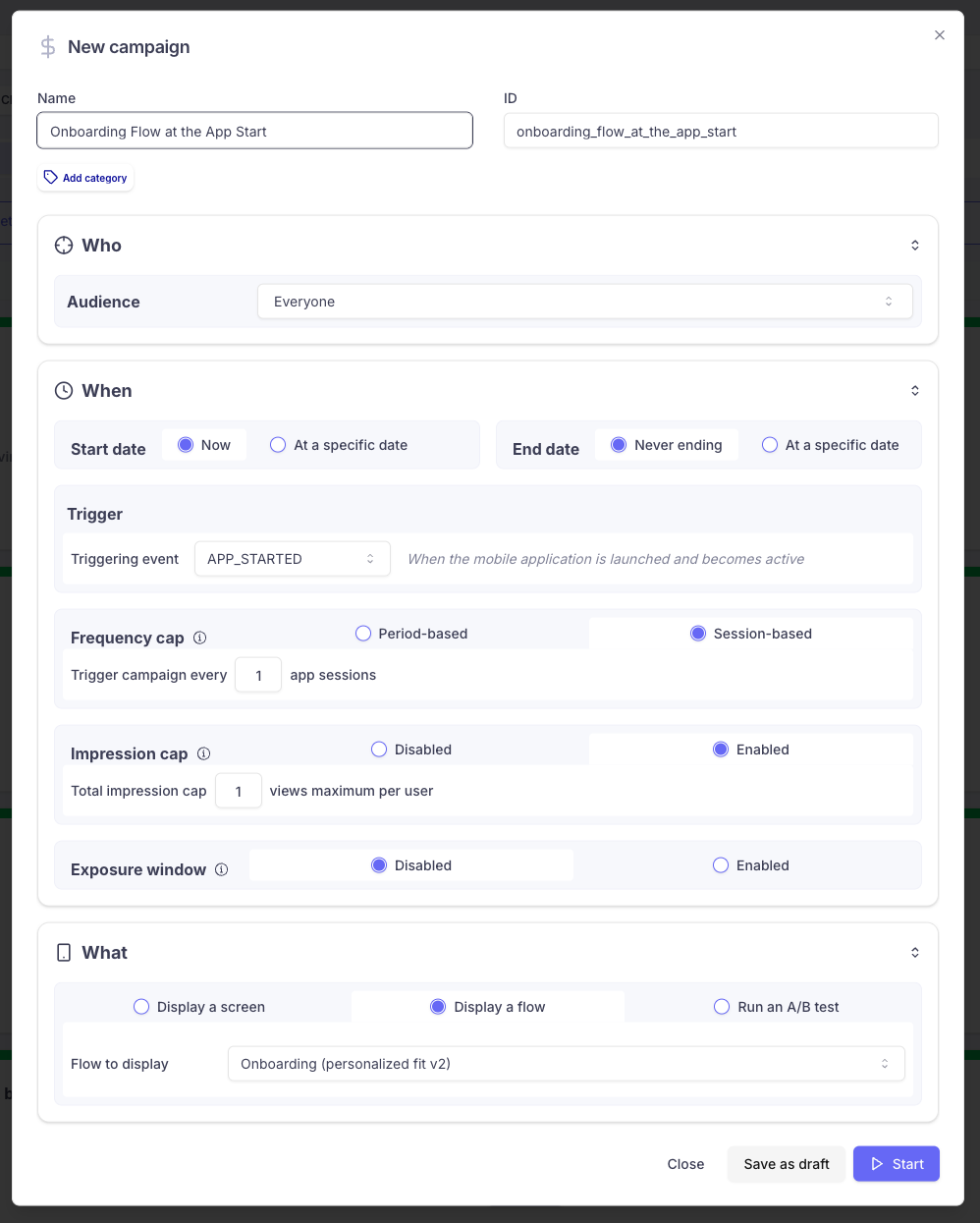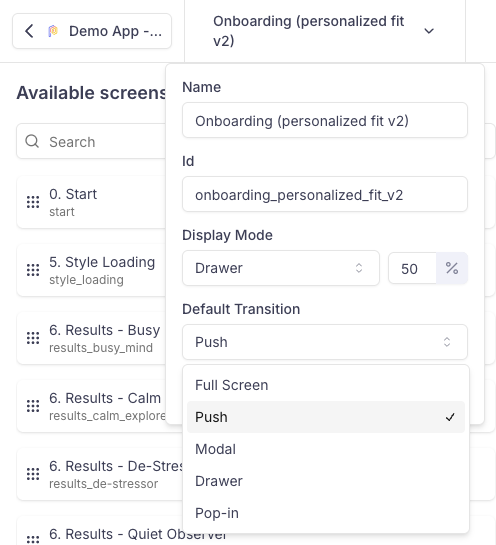Integrating a Flow into your app
This pages provides details on how to integrate a flow into your app
SDK v5.5.0+ recommendedFlows require to integrate SDK v5.3 and above. They are supported since this version, but we recommend v5.5.0 for a better stability and data consistency.
Integrating a Flow into your app
Configuring the display mode
To define the way a Flow should get displayed into your app, you can configure its display mode.

If no display mode has been configured, the default display mode is applied by the SDK is Full screen.
For drawers and popins, you can set the desired height:

Push display mode requires a navigation bar in the parent viewThe Display mode
Pushonly works if the parent view already contains a navigation bar.If you try to display a Screen/Flow associated with the
Pushdisplay mode from a parent view which doesn't have a navigation bar associated, the display() method will fallback on the default display mode:
- Modal on iOS
- Full Screen on Android
Display modes available
Here are how the different display modes available

The configured display mode does not reflect in the preview of the ConsoleThis means that it will not reflect in the Console if you change it.
This will require a bit more work and we hope to make it available soon... Stay tuned!
Flow display mode VS transition type
Difference between the Flow display mode and the transition type between Screens within a FlowWhen configuring a Flow, it’s important to distinguish between the Flow Display Mode and the Transition Type. Each plays a distinct role in how screens appear within your app.
Flow Display ModeThe Display Mode determines how the first Screen of the Flow is presented within the app.
It defines the integration behavior between the Flow and the parent view managed by your app—such as whether the Flow is shown as a modal, fullscreen, embedded view, etc.
This setting is configured at the Flow level and applies only to how the Flow starts.
Screen Transition TypeThe Transition Type defines how navigation occurs between Screens within the Flow.
It controls the animation or visual behavior when moving from one Screen to the next (e.g., slide, fade, instant).
You can configure a default Transition Type at the Flow level, and optionally override it for individual Transitions to customize specific paths in the user journey.
Mapping a Flow with a Placement
Once created, Flows can be associated with a Placement

Associating a Flow with a Campaign
The Campaigns feature lets you create powerful no-code automations that will display a Purchasely Screen for a particular Audience at the App start.
Flows can be associated with Campaigns to combine both feature: the ability to display a customizable sequence of Screen following the app start.
This integration will automatically take the Display mode into consideration.

Running an A/B Test between 2 Flows
This capability is only opened to customers benefitting from the Flows Premium feature.
You can configure an A/B Test between 2 Flows or 1 Flow vs a single Screen.

Updated about 1 month ago
In the next section, we will explain how to integrate a Quiz into your Flow to fetch user insights
